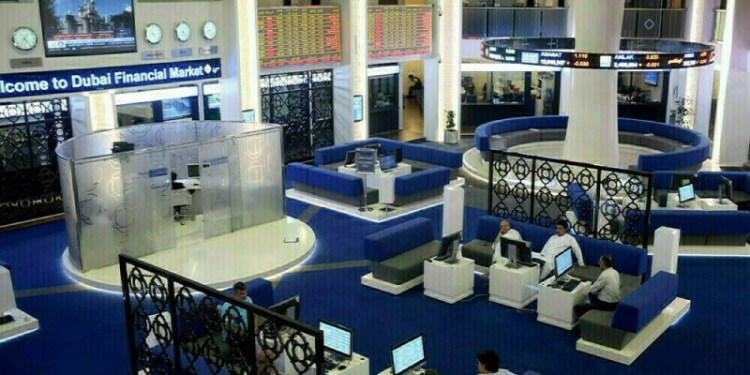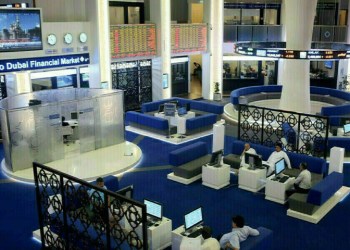By Rania El Gamal and Dmitry Zhdannikov
LONDON/DUBAI (Reuters) – – If Ali al-Naimi were to review his time as Saudi oil minister, he might feel events had turned full circle.
Two years after the long-serving technocrat’s 1995 promotion to become only the kingdom’s fourth oil minister in 40 years, Naimi pushed through an ill-fated Organization of the Petroleum Exporting Countries deal in Indonesia to lift supply just as Asia went into economic tailspin.
Designed to punish Venezuela for flouting its output quota, the decision has gone down in OPEC lore as the most poorly-judged in cartel history. Oil prices halved to $ 10 a barrel.
Nearly two decades later, Naimi, 80, is facing another supply crisis, driving oil prices to the lowest in six years — at below $ 40 per barrel, more than $ 100 below the 2008 pre-financial crisis peak.
And as in Jakarta in 1997, today’s crash has been orchestrated by Naimi himself with the same aim in mind: to defend Saudi market share against rivals — primarily this time against booming U.S. shale oil supply.
Throughout his career, Naimi has worked to avoid a repeat of the error of his legendary predecessor, Sheikh Zaki Yamani, who was dismissed in 1986 as he unsuccessfully tried to fight an oil price collapse by unilaterally reducing Saudi output.
Instead, through three cyclical downturns in oil prices, Naimi has always chosen to use Saudi Arabia’s vast oil supply scale – Riyadh produces more than a tenth of global crude – and its financial muscle to drive out higher cost rivals.
That survival-of-the-fittest strategy means refusing to cut output unilaterally, waiting to outlast other producers before they beg Riyadh to collaborate in joint supply curbs to rescue prices.
“In everything Naimi did, he never wanted to repeat the Yamani mistake,” said Gary Ross, a veteran OPEC watcher and the founder of U.S.-based PIRA Energy.
“He was prepared to manage the market and cut only when he had reasonable partners,” said Ross, who participated in the first and only successful oil cooperation talks between OPEC and Russia in early 2000. “Today, from the Saudi prospective, they have no allies.”
RECRUITING RUSSIA
Oil market watchers pore over Naimi’s every word, and his past actions, to try to predict how the veteran tactician will act. He has always found a way to act jointly with other producers, rather than cut supply alone.
After the 1997 oil slump, Naimi eventually steered OPEC out of trouble by engineering a series of cuts with arch-rival Iran supporting the strategy amid a thawing of political relations. Meanwhile, non-OPEC Mexico helped bring Venezuela on board.
In 2001, Naimi found new allies as, after months of standoff, leading OPEC rival Russia pledged to join cuts, later reneging on its promises. In 2008, all OPEC members quickly supported supply curbs led by Saudi as oil plunged in the aftermath of the global financial crisis.
As a result, oil prices bounced back quickly, providing the capital for new investment in the controversial hydraulic fracturing technology that saw U.S. shale oil supplies rocket.
That new supply source and China’s slowdown have caused the latest downturn.
Saudi oil sources say this time around Naimi will stick to his policy of high output levels, even if crude prices fall further, until he finds partners to cooperate.
“If the price falls, it falls, you cannot do anything about it. But … others will be harmed greatly before we feel any pain,” Naimi told the Middle Eastern Economic Survey last year in the most detailed explanation of his current thinking.
Naimi did not respond to requests to be interviewed for this article. But his track record of holding firm until other countries join Saudi Arabia for joint action speaks volumes.
“You can’t beat experience, and Naimi has loads of it. He earned his wings in the 70s and 80s at Aramco and has now gone through three iterations of a crude price cycle: early 1980s, late 1990s, and the current one,” said Yasser Elguindi of Medley Global Advisors.
ISOLATED
The problem for Naimi is that he now appears more isolated than ever before.
Described by admirers and critics alike as a great technician, he has won respect in the industry for driving OPEC policy along business lines and, where possible, avoiding politics.
Yet in the Middle East, politics and oil cannot always be kept apart. And when politics come into play, even the most adept negotiator may be prone to miscalculation.
OPEC has weathered internal strife and conflict many times before: wars between members — Iran and Iraq in the 1980s, and Iraq’s invasion of Kuwait in the 1990s, both before Naimi took the helm of the Saudi oil ministry.
But the Sunni-Shia conflicts now setting Saudi Arabia and Iran at each other’s throats in places like Syria and Yemen are unprecedented during Naimi’s tenure as minister.
In addition, predominantly Shia Iraq has become a de facto ally of Iran within OPEC since a U.S. invasion ousted dictator Saddam Hussein, and both countries have enormous potential to increase supply.
Outside OPEC, Russia is at odds with Riyadh in Middle Eastern conflicts, joining the war in Syria two months ago on the side of Iranian ally Bashar al-Assad.
Meanwhile, many Saudis believe the U.S. shale oil boom has prompted Washington to reassess its military commitment in the Middle East that protects Riyadh in return for a sure supply of crude.
OPEC tensions spilled into the cartel’s meeting last week when the group failed to agree a production target for the first time in decades, with Iran saying it would steeply increase supply after Western sanctions are lifted next year and Iraq saying it would boost exports too.
“Some member countries produce as much as they wish,” Iranian oil minister Bijan Zangeneh told reporters after the meeting in a clear reference to Saudi Arabia. “Iran will need no one’s permission to raise its output.”
One executive from a major oil company said that while Naimi’s tactics against U.S. shale were working and the low oil price was beginning to depress rivals’ output, the Iranian comeback has complicated the picture: “Sometimes it feels that the Saudis have miscalculated how quickly Iran could clinch the nuclear deal and return to the markets”.
CHANGES AT HOME
At the age of 12, Naimi joined state oil giant Saudi Aramco, riding in the back of crowded trucks to get to work. Not many years into the job, he impressed Aramco managers by stating his ambition to run the company.
Naimi became President of Aramco in 1983 and CEO in 1988, the first Saudi to hold those posts, previously held only by Americans in the historically Arab-American oil company.
As one of the country’s highest-ranking non-royals, Naimi grew from a cautious public face into an outspoken policymaker, given full and sole responsibility for Saudi oil policy, leaving oil markets hanging on his every word.
Growing tired of multiple OPEC meetings a year, he blamed the press for failing to understand his utterances and called reporters “agents of disturbance”.
“He wants the best price and the best volumes for his country. As for the image with media — I don’t think he really cares,” said PIRA’s Ross.
Naimi has taken care to avoid entanglement in Saudi royal politics. He took office the same year King Fahd suffered a stroke and Fahd’s half-brother, Abdullah, a cautious reformer, became de facto regent. Abdullah ruled as king from 2005 until his death earlier this year.
This year’s political changes have been the most profound Naimi has seen – with new King Salman elevating a fresh generation of leadership in the form of his nephew Crown Prince Mohammed bin Nayef and son Deputy Crown Prince Mohammed bin Salman.
Mohammed bin Salman, 30, became the ultimate oil decision maker in April. Last month he said the kingdom was working on reducing subsidies and introducing new taxes so the budget could withstand the pain of lower oil prices for longer.
Some interpret that as a signal of support for Naimi’s policies, but say the days when Naimi’s voice alone spoke for Saudi oil policy may be over.
One insider said an indication that changes may be brewing was that comments on oil policy had been coming not only from Naimi and the deputy crown prince, but also from Aramco’s chairman Khalid al-Falih and from another son of Salman, Prince Abdulaziz, Naimi’s long-serving deputy.
“It is like having four oil ministers now in Saudi Arabia. Everyone talks about oil policy and is a spokesman for the oil industry. It should be only Naimi as he is the minister, but he is slowly losing influence,” said the insider, who asked not to be identified.
(Editing by Richard Mably and Peter Graff)




























